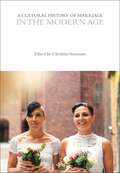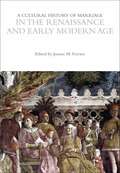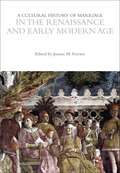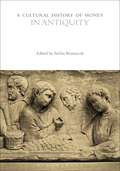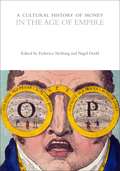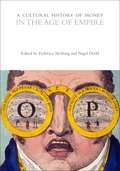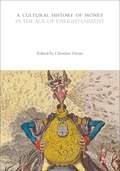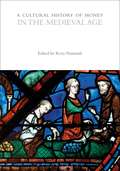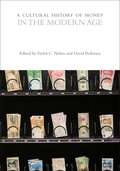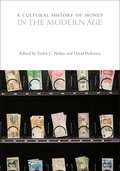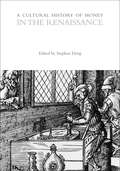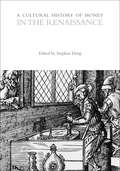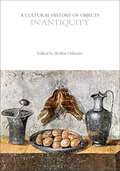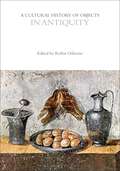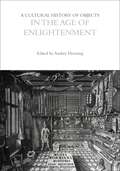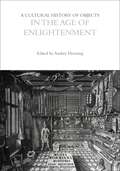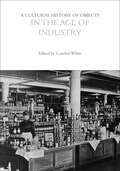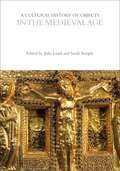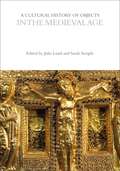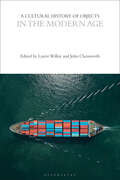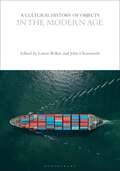- Table View
- List View
A Cultural History of Marriage in the Modern Age (The Cultural Histories Series)
Spanning cultures across the 20th century, this volume explores how marriage, especially in the West, was disestablished as the primary institution organizing social life. In the developing world, the economic, social, and legal foundations of traditional marriage are stronger but also weakening. Marriage changed because an industrial wage economy reduced familial patriarchal control of youth and women and spurred demands and possibilities for greater autonomy and choice in love. After the Second World War, when more married women pursued education and employment, and gays and lesbians gained visibility, feminism and gay liberation also challenged patriarchal and restrictive gender roles and helped to reshape marriage. In 1920 most people married for life; in the twenty-first century fewer marry, and serial monogamy prevails. Marriage is more diverse and flexible in form but also more fragile and optional than it once was.Over the century control of courtship shifted from parents to youth, and friends, as opposed to kin, became more important in sustaining marriages. Dual-wage-earner families replaced the male breadwinner. Social and political liberalism assailed conservative laws and religious regimes, expanding access to divorce and birth control. Although norms of masculinity and femininity retain huge power in most cultures, visions of more egalitarian and romantic love as the basis of marriage have gained traction-made appealing by the global spread of capitalist social relations and also broadcast by culture industries in the developed world. The legalization of same-sex marriage-in over twenty-five nations by 2020-epitomizes a century of change toward a less gender-defined ideal that includes a continued desire for social recognition and permanence.A Cultural History of Marriage in the Modern Age presents an overview of the period with essays on Courtship and Ritual; Religion, State and Law; Kinship and Social Networks; the Family Economy; Love and Sex; the Breaking of Vows; and Representations of Marriage.
A Cultural History of Marriage in the Renaissance and Early Modern Age (The Cultural Histories Series)
by Joanne M. FerraroWhy marry? The personal question is timeless. Yet the highly emotional desires of men and women during the period between 1450 and 1650 were also circumscribed by external forces that operated within a complex arena of sweeping economic, demographic, political, and religious changes. The period witnessed dramatic religious reforms in the Catholic confession and the introduction of multiple Protestant denominations; the advent of the printing press; European encounters and exchange with the Americas, North Africa, and southwestern and eastern Asia; the growth of state bureaucracies; and a resurgence of ecclesiastical authority in private life. These developments, together with social, religious, and cultural attitudes, including the constructed norms of masculinity, femininity, and sexuality, impinged upon the possibility of marrying. The nine scholars in this volume aim to provide a comprehensive picture of current research on the cultural history of marriage for the years between 1450 and 1650 by identifying both the ideal templates for nuptial unions in prescriptive writings and artistic representation and actual practices in the spheres of courtship and marriage rites, sexual relationships, the formation of family networks, marital dissolution, and the overriding choices of individuals over the structural and cultural constraints of the time.A Cultural History of Marriage in the Renaissance and Early Modern Age presents an overview of the period with essays on Courtship and Ritual; Religion, State and Law; Kinship and Social Networks; the Family Economy; Love and Sex; the Breaking of Vows; and Representations of Marriage.
A Cultural History of Marriage in the Renaissance and Early Modern Age (The Cultural Histories Series)
Why marry? The personal question is timeless. Yet the highly emotional desires of men and women during the period between 1450 and 1650 were also circumscribed by external forces that operated within a complex arena of sweeping economic, demographic, political, and religious changes. The period witnessed dramatic religious reforms in the Catholic confession and the introduction of multiple Protestant denominations; the advent of the printing press; European encounters and exchange with the Americas, North Africa, and southwestern and eastern Asia; the growth of state bureaucracies; and a resurgence of ecclesiastical authority in private life. These developments, together with social, religious, and cultural attitudes, including the constructed norms of masculinity, femininity, and sexuality, impinged upon the possibility of marrying. The nine scholars in this volume aim to provide a comprehensive picture of current research on the cultural history of marriage for the years between 1450 and 1650 by identifying both the ideal templates for nuptial unions in prescriptive writings and artistic representation and actual practices in the spheres of courtship and marriage rites, sexual relationships, the formation of family networks, marital dissolution, and the overriding choices of individuals over the structural and cultural constraints of the time.A Cultural History of Marriage in the Renaissance and Early Modern Age presents an overview of the period with essays on Courtship and Ritual; Religion, State and Law; Kinship and Social Networks; the Family Economy; Love and Sex; the Breaking of Vows; and Representations of Marriage.
A Cultural History of Money in Antiquity (The Cultural Histories Series)
by Bloomsbury PublishingThe origins of the modern, Western concept of money can be traced back to the earliest electrum coins that were produced in Asia Minor in the seventh century BCE. While other forms of currency (shells, jewelry, silver ingots) were in widespread use long before this, the introduction of coinage aided and accelerated momentous economic, political, and social developments such as long-distance trade, wealth creation (and the social differentiation that followed from that), and the financing of military and political power. Coinage, though adopted inconsistently across different ancient societies, became a significant marker of identity and became embedded in practices of religion and superstition. And this period also witnessed the emergence of the problems of money - inflation, monetary instability, and the breakup of monetary unions - which have surfaced repeatedly in succeeding centuries. Drawing upon a wealth of visual and textual sources, A Cultural History of Money in Antiquity presents essays that examine key cultural case studies of the period on the themes of technologies, ideas, ritual and religion, the everyday, art and representation, interpretation, and the issues of the age.
A Cultural History of Money in Antiquity (The Cultural Histories Series)
by Bloomsbury PublishingThe origins of the modern, Western concept of money can be traced back to the earliest electrum coins that were produced in Asia Minor in the seventh century BCE. While other forms of currency (shells, jewelry, silver ingots) were in widespread use long before this, the introduction of coinage aided and accelerated momentous economic, political, and social developments such as long-distance trade, wealth creation (and the social differentiation that followed from that), and the financing of military and political power. Coinage, though adopted inconsistently across different ancient societies, became a significant marker of identity and became embedded in practices of religion and superstition. And this period also witnessed the emergence of the problems of money - inflation, monetary instability, and the breakup of monetary unions - which have surfaced repeatedly in succeeding centuries. Drawing upon a wealth of visual and textual sources, A Cultural History of Money in Antiquity presents essays that examine key cultural case studies of the period on the themes of technologies, ideas, ritual and religion, the everyday, art and representation, interpretation, and the issues of the age.
A Cultural History of Money in the Age of Empire (The Cultural Histories Series)
by Bloomsbury PublishingThe nineteenth century was a time of intense monetization of social life: increasingly money became the only means of access to goods and services, especially in the new metropolises; new technologies and infrastructures emerged for saving and circulating money and for standardizing coinage; and paper currencies were printed, founded purely on trust without any intrinsic metallic value. But the monetary landscape was ambivalent so that the forces unifying monetary practice (imperial and national currencies, global monetary standards such as the gold standard) coexisted with the proliferation of local currencies. Money became a central issue in politics, the arts, and sciences - and the modern discipline of economics was born, with its claim to a monopoly on knowing and governing money.Drawing upon a wealth of visual and textual sources, A Cultural History of Money in the Age of Empire presents essays that examine key cultural case studies of the period on the themes of technologies, ideas, ritual and religion, the everyday, art and representation, interpretation, and the issues of the age.
A Cultural History of Money in the Age of Empire (The Cultural Histories Series)
by Bloomsbury PublishingThe nineteenth century was a time of intense monetization of social life: increasingly money became the only means of access to goods and services, especially in the new metropolises; new technologies and infrastructures emerged for saving and circulating money and for standardizing coinage; and paper currencies were printed, founded purely on trust without any intrinsic metallic value. But the monetary landscape was ambivalent so that the forces unifying monetary practice (imperial and national currencies, global monetary standards such as the gold standard) coexisted with the proliferation of local currencies. Money became a central issue in politics, the arts, and sciences - and the modern discipline of economics was born, with its claim to a monopoly on knowing and governing money.Drawing upon a wealth of visual and textual sources, A Cultural History of Money in the Age of Empire presents essays that examine key cultural case studies of the period on the themes of technologies, ideas, ritual and religion, the everyday, art and representation, interpretation, and the issues of the age.
A Cultural History of Money in the Age of Enlightenment (The Cultural Histories Series)
by Bloomsbury PublishingThe Enlightenment was a time of monetary turmoil and transformation in Europe. Change began with a riot of experimentation, including novel ideas about human agency and capacity to promote economic progress, efforts to reframe divinity in terms (like the providential) compatible with market exchange, new instruments of credit, and innovative institutions such as national banks and capital markets. Europeans, including the settler societies in North America, improvised frantically: people faced the task of everyday exchange in changing media; governments took up the project of creating currencies that supported their political power; artists and writers raced to represent new forms of wealth and interpret the issues they raised; and intellectuals struggled to conceptualize, and tame, patterns of monetary transformation. The result was a rich debate, still unsettled, about the sources of value, the morality of the market, and the very nature of money.Drawing upon a wealth of visual and textual sources, A Cultural History of Money in the Age of Enlightenment presents essays that examine key cultural case studies of the period on the themes of technologies, ideas, ritual and religion, the everyday, art and representation, interpretation, and the issues of the age.
A Cultural History of Money in the Age of Enlightenment (The Cultural Histories Series)
by Bloomsbury PublishingThe Enlightenment was a time of monetary turmoil and transformation in Europe. Change began with a riot of experimentation, including novel ideas about human agency and capacity to promote economic progress, efforts to reframe divinity in terms (like the providential) compatible with market exchange, new instruments of credit, and innovative institutions such as national banks and capital markets. Europeans, including the settler societies in North America, improvised frantically: people faced the task of everyday exchange in changing media; governments took up the project of creating currencies that supported their political power; artists and writers raced to represent new forms of wealth and interpret the issues they raised; and intellectuals struggled to conceptualize, and tame, patterns of monetary transformation. The result was a rich debate, still unsettled, about the sources of value, the morality of the market, and the very nature of money.Drawing upon a wealth of visual and textual sources, A Cultural History of Money in the Age of Enlightenment presents essays that examine key cultural case studies of the period on the themes of technologies, ideas, ritual and religion, the everyday, art and representation, interpretation, and the issues of the age.
A Cultural History of Money in the Medieval Age (The Cultural Histories Series)
by Bloomsbury PublishingMoney provides a unique and illuminating perspective on the Middle Ages. In much of medieval Europe the central meaning of money was a prescribed unit of precious metal but in practice precious metal did not necessarily change hands and indeed coinage was very often in short supply. Money had economic, institutional, social, and cultural dimensions which developed the legacy of antiquity and set the scene for modern developments including the rise of capitalism and finance as well as a moralized discourse on the proper and improper uses of money. In its many forms - coin, metal, commodity, and concept - money played a central role in shaping the character of medieval society and, in turn, offers a vivid reflection of the distinctive features of medieval civilization.Drawing upon a wealth of visual and textual sources, A Cultural History of Money in the Medieval Age presents essays that examine key cultural case studies of the period on the themes of technologies, ideas, ritual and religion, the everyday, art and representation, interpretation, and the issues of the age.
A Cultural History of Money in the Medieval Age (The Cultural Histories Series)
by Bloomsbury PublishingMoney provides a unique and illuminating perspective on the Middle Ages. In much of medieval Europe the central meaning of money was a prescribed unit of precious metal but in practice precious metal did not necessarily change hands and indeed coinage was very often in short supply. Money had economic, institutional, social, and cultural dimensions which developed the legacy of antiquity and set the scene for modern developments including the rise of capitalism and finance as well as a moralized discourse on the proper and improper uses of money. In its many forms - coin, metal, commodity, and concept - money played a central role in shaping the character of medieval society and, in turn, offers a vivid reflection of the distinctive features of medieval civilization.Drawing upon a wealth of visual and textual sources, A Cultural History of Money in the Medieval Age presents essays that examine key cultural case studies of the period on the themes of technologies, ideas, ritual and religion, the everyday, art and representation, interpretation, and the issues of the age.
A Cultural History of Money in the Modern Age (The Cultural Histories Series)
by Bloomsbury PublishingBracketed by global financial crises and economic downturns, the modern age has been defined by debates about, and transformations of, money. The period witnessed the consolidation of national currencies and monetary policies as well as the diversification of payment technologies and the proliferation of financial instruments. Throughout, even as it appeared abstracted by finance and depoliticized by expert ideologies, money was revealed again and again to be a powerful medium of cultural imagination and practical inventiveness as well as the site of public and political struggles. Modern money - both as a form of liquidity and as a claim on wealth - remains deeply unsettled, caught between private and public interests and subject to epic struggles over the infrastructures of value creation and circulation and their distributional consequences.Drawing upon a wealth of visual and textual sources, A Cultural History of Money in the Modern Age presents essays that examine key cultural case studies of the period on the themes of technologies, ideas, ritual and religion, the everyday, art and representation, interpretation, and the issues of the age.
A Cultural History of Money in the Modern Age (The Cultural Histories Series)
by Bloomsbury PublishingBracketed by global financial crises and economic downturns, the modern age has been defined by debates about, and transformations of, money. The period witnessed the consolidation of national currencies and monetary policies as well as the diversification of payment technologies and the proliferation of financial instruments. Throughout, even as it appeared abstracted by finance and depoliticized by expert ideologies, money was revealed again and again to be a powerful medium of cultural imagination and practical inventiveness as well as the site of public and political struggles. Modern money - both as a form of liquidity and as a claim on wealth - remains deeply unsettled, caught between private and public interests and subject to epic struggles over the infrastructures of value creation and circulation and their distributional consequences.Drawing upon a wealth of visual and textual sources, A Cultural History of Money in the Modern Age presents essays that examine key cultural case studies of the period on the themes of technologies, ideas, ritual and religion, the everyday, art and representation, interpretation, and the issues of the age.
A Cultural History of Money in the Renaissance (The Cultural Histories Series)
by Bloomsbury PublishingIn a time before large banking systems, and with paper money just in its infancy, money during the Renaissance meant coinage (mainly gold and silver) and local credit systems. These monetary forms had a significant influence on the ways in which money was understood throughout the period, and shaped discussions on such topics as the meaning of monetary value, the economic, political, religious, and aesthetic uses of coinage, the moral implications of usury and credit systems, and the importance of reputation, both at the state and individual levels. Crucial to the transformation of ideas about money in the period was the growing awareness that the individuals, up to and including the monarch, were powerless to overcome the market forces that determined value and directed the movement of goods and money.Drawing upon a wealth of visual and textual sources, A Cultural History of Money in the Renaissance presents essays that examine key cultural case studies of the period on the themes of technologies, ideas, ritual and religion, the everyday, art and representation, interpretation, and the issues of the age.
A Cultural History of Money in the Renaissance (The Cultural Histories Series)
by Bloomsbury PublishingIn a time before large banking systems, and with paper money just in its infancy, money during the Renaissance meant coinage (mainly gold and silver) and local credit systems. These monetary forms had a significant influence on the ways in which money was understood throughout the period, and shaped discussions on such topics as the meaning of monetary value, the economic, political, religious, and aesthetic uses of coinage, the moral implications of usury and credit systems, and the importance of reputation, both at the state and individual levels. Crucial to the transformation of ideas about money in the period was the growing awareness that the individuals, up to and including the monarch, were powerless to overcome the market forces that determined value and directed the movement of goods and money.Drawing upon a wealth of visual and textual sources, A Cultural History of Money in the Renaissance presents essays that examine key cultural case studies of the period on the themes of technologies, ideas, ritual and religion, the everyday, art and representation, interpretation, and the issues of the age.
A Cultural History of Objects in Antiquity (The Cultural Histories Series)
by Robin OsborneA Cultural History of Objects in Antiquity covers the period 500 BCE to 500 CE, examining ancient objects from machines and buildings to furniture and fashion. Many of our current attitudes to the world of things are shaped by ideas forged in classical antiquity. We now understand that we do not merely do things to objects, they do things to us. Reinterpreting objects in Greece and Rome casts new light on our understanding of ourselves and turns the ancient world upside down. The 6 volume set of the Cultural History of Objects examines how objects have been created, used, interpreted and set loose in the world over the last 2500 years. Over this time, the West has developed particular attitudes to the material world, at the centre of which is the idea of the object. The themes covered in each volume are objecthood; technology; economic objects; everyday objects; art; architecture; bodily objects; object worlds. Robin Osborne is Professor of Ancient History at the University of Cambridge, UK. Volume 1 in the Cultural History of Objects set. General Editors: Dan Hicks and William Whyte
A Cultural History of Objects in Antiquity (The Cultural Histories Series)
A Cultural History of Objects in Antiquity covers the period 500 BCE to 500 CE, examining ancient objects from machines and buildings to furniture and fashion. Many of our current attitudes to the world of things are shaped by ideas forged in classical antiquity. We now understand that we do not merely do things to objects, they do things to us. Reinterpreting objects in Greece and Rome casts new light on our understanding of ourselves and turns the ancient world upside down. The 6 volume set of the Cultural History of Objects examines how objects have been created, used, interpreted and set loose in the world over the last 2500 years. Over this time, the West has developed particular attitudes to the material world, at the centre of which is the idea of the object. The themes covered in each volume are objecthood; technology; economic objects; everyday objects; art; architecture; bodily objects; object worlds. Robin Osborne is Professor of Ancient History at the University of Cambridge, UK. Volume 1 in the Cultural History of Objects set. General Editors: Dan Hicks and William Whyte
A Cultural History of Objects in the Age of Enlightenment (The Cultural Histories Series)
by Audrey HorningA Cultural History of Objects in the Age of Enlightenment covers the period 1600 to 1760, a time marked by the movement of people, ideas and goods. The objects explored in this volume –from scientific instrumentation and Baroque paintings to slave ships and shackles –encapsulate the contradictory impulses of the age. The entwined forces of capitalism and colonialism created new patterns of consumption, facilitated by innovations in maritime transport, new forms of exchange relations, and the exploitation of non-Western peoples and lands. The world of objects in the Enlightenment reveal a Western material culture profoundly shaped by global encounters. The 6 volume set of the Cultural History of Objects examines how objects have been created, used, interpreted and set loose in the world over the last 2500 years. Over this time, the West has developed particular attitudes to the material world, at the centre of which is the idea of the object. The themes covered in each volume are objecthood; technology; economic objects; everyday objects; art; architecture; bodily objects; object worlds. Audrey Horning is Professor at William & Mary, USA, and at Queen's University Belfast, UK. Volume 4 in the Cultural History of Objects set. General Editors: Dan Hicks and William Whyte
A Cultural History of Objects in the Age of Enlightenment (The Cultural Histories Series)
A Cultural History of Objects in the Age of Enlightenment covers the period 1600 to 1760, a time marked by the movement of people, ideas and goods. The objects explored in this volume –from scientific instrumentation and Baroque paintings to slave ships and shackles –encapsulate the contradictory impulses of the age. The entwined forces of capitalism and colonialism created new patterns of consumption, facilitated by innovations in maritime transport, new forms of exchange relations, and the exploitation of non-Western peoples and lands. The world of objects in the Enlightenment reveal a Western material culture profoundly shaped by global encounters. The 6 volume set of the Cultural History of Objects examines how objects have been created, used, interpreted and set loose in the world over the last 2500 years. Over this time, the West has developed particular attitudes to the material world, at the centre of which is the idea of the object. The themes covered in each volume are objecthood; technology; economic objects; everyday objects; art; architecture; bodily objects; object worlds. Audrey Horning is Professor at William & Mary, USA, and at Queen's University Belfast, UK. Volume 4 in the Cultural History of Objects set. General Editors: Dan Hicks and William Whyte
A Cultural History of Objects in the Age of Industry (The Cultural Histories Series)
by Carolyn L. WhiteA Cultural History of Objects in the Age of Industry covers the period 1760 to 1900, a time of dramatic change in the material world as objects shifted from the handmade to the machine made. The revolution in making, and in consuming the things which were made, impacted on lives at every scale –from body to home to workplace to city to nation. Beyond the explosion in technology, scientific knowledge, manufacturing, trade, and museums, changes in class structure, politics, ideology, and morality all acted to transform the world of objects. The 6 volume set of the Cultural History of Objects examines how objects have been created, used, interpreted and set loose in the world over the last 2500 years. Over this time, the West has developed particular attitudes to the material world, at the centre of which is the idea of the object. The themes covered in each volume are objecthood; technology; economic objects; everyday objects; art; architecture; bodily objects; object worlds. Carolyn White is Professor at the University of Nevada, Reno, USA. Volume 5 in the Cultural History of Objects set. General Editors: Dan Hicks and William Whyte
A Cultural History of Objects in the Age of Industry (The Cultural Histories Series)
A Cultural History of Objects in the Age of Industry covers the period 1760 to 1900, a time of dramatic change in the material world as objects shifted from the handmade to the machine made. The revolution in making, and in consuming the things which were made, impacted on lives at every scale –from body to home to workplace to city to nation. Beyond the explosion in technology, scientific knowledge, manufacturing, trade, and museums, changes in class structure, politics, ideology, and morality all acted to transform the world of objects. The 6 volume set of the Cultural History of Objects examines how objects have been created, used, interpreted and set loose in the world over the last 2500 years. Over this time, the West has developed particular attitudes to the material world, at the centre of which is the idea of the object. The themes covered in each volume are objecthood; technology; economic objects; everyday objects; art; architecture; bodily objects; object worlds. Carolyn White is Professor at the University of Nevada, Reno, USA. Volume 5 in the Cultural History of Objects set. General Editors: Dan Hicks and William Whyte
A Cultural History of Objects in the Medieval Age (The Cultural Histories Series)
by Julie Lund and Sarah SempleA Cultural History of Objects in the Medieval Age covers the period 500 to 1400, examining the creation, use and understanding of human-made objects and their consequences and impacts. The power and agency of objects significantly evolved over this time. Exploring objects and artefacts within art, technology, and everyday life, the volume challenges our understanding of both life worlds and object worlds in medieval society. The 6 volume set of the Cultural History of Objects examines how objects have been created, used, interpreted and set loose in the world over the last 2500 years. Over this time, the West has developed particular attitudes to the material world, at the centre of which is the idea of the object. The themes covered in each volume are objecthood; technology; economic objects; everyday objects; art; architecture; bodily objects; object worlds. Julie Lund is Associate Professor at the University of Oslo, Norway. Sarah Semple is Professor at Durham University, UK. Volume 2 in the Cultural History of Objects set. General Editors: Dan Hicks and William Whyte
A Cultural History of Objects in the Medieval Age (The Cultural Histories Series)
A Cultural History of Objects in the Medieval Age covers the period 500 to 1400, examining the creation, use and understanding of human-made objects and their consequences and impacts. The power and agency of objects significantly evolved over this time. Exploring objects and artefacts within art, technology, and everyday life, the volume challenges our understanding of both life worlds and object worlds in medieval society. The 6 volume set of the Cultural History of Objects examines how objects have been created, used, interpreted and set loose in the world over the last 2500 years. Over this time, the West has developed particular attitudes to the material world, at the centre of which is the idea of the object. The themes covered in each volume are objecthood; technology; economic objects; everyday objects; art; architecture; bodily objects; object worlds. Julie Lund is Associate Professor at the University of Oslo, Norway. Sarah Semple is Professor at Durham University, UK. Volume 2 in the Cultural History of Objects set. General Editors: Dan Hicks and William Whyte
A Cultural History of Objects in the Modern Age (The Cultural Histories Series)
by Laurie A. Wilkie and John M. ChenowethA Cultural History of Objects in the Modern Age covers the period 1900 to today, a time marked by massive global changes in production, transportation, and information-sharing in a post-colonial world. New materials and inventions - from plastics to the digital to biotechnology - have created unprecedented scales of disruption, shifting and blurring the categories and meanings of the object. If the 20th century demonstrated that humans can be treated like things whilst things can become ever more human, where will the 21st century take us? The 6 volume set of the Cultural History of Objects examines how objects have been created, used, interpreted and set loose in the world over the last 2500 years. Over this time, the West has developed particular attitudes to the material world, at the centre of which is the idea of the object. The themes covered in each volume are objecthood; technology; economic objects; everyday objects; art; architecture; bodily objects; object worlds. Laurie A. Wilkie is Professor at the University of California-Berkeley, USA. John M. Chenoweth, is Associate Professor at the University of Michigan-Dearborn, USA. Volume 6 in the Cultural History of Objects set. General Editors: Dan Hicks and William Whyte
A Cultural History of Objects in the Modern Age (The Cultural Histories Series)
A Cultural History of Objects in the Modern Age covers the period 1900 to today, a time marked by massive global changes in production, transportation, and information-sharing in a post-colonial world. New materials and inventions - from plastics to the digital to biotechnology - have created unprecedented scales of disruption, shifting and blurring the categories and meanings of the object. If the 20th century demonstrated that humans can be treated like things whilst things can become ever more human, where will the 21st century take us? The 6 volume set of the Cultural History of Objects examines how objects have been created, used, interpreted and set loose in the world over the last 2500 years. Over this time, the West has developed particular attitudes to the material world, at the centre of which is the idea of the object. The themes covered in each volume are objecthood; technology; economic objects; everyday objects; art; architecture; bodily objects; object worlds. Laurie A. Wilkie is Professor at the University of California-Berkeley, USA. John M. Chenoweth, is Associate Professor at the University of Michigan-Dearborn, USA. Volume 6 in the Cultural History of Objects set. General Editors: Dan Hicks and William Whyte
